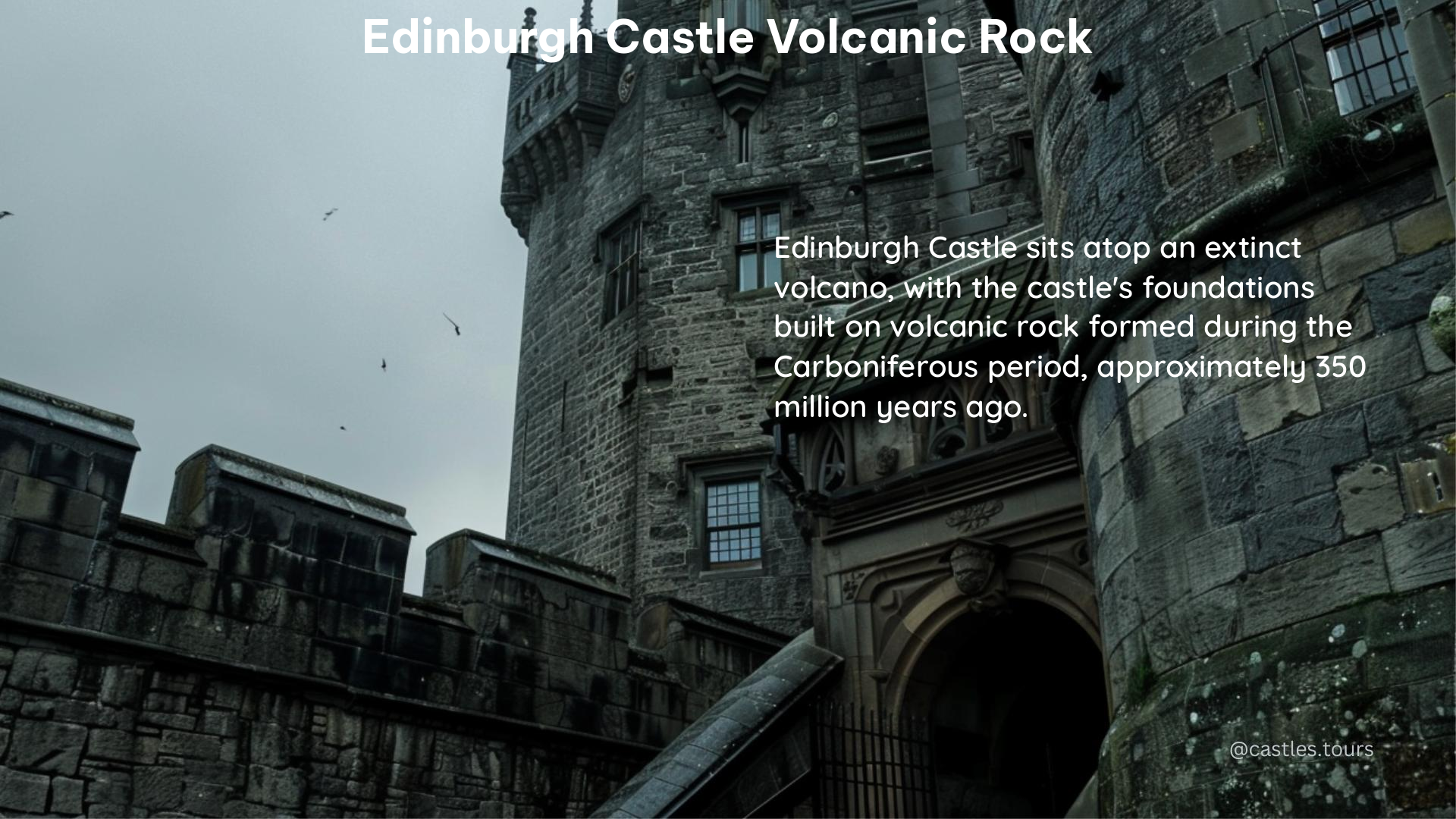The volcanic rock on which Edinburgh Castle is built is a remarkable geological feature that has played a crucial role in shaping the city’s history and landscape. This ancient rock, formed millions of years ago, has provided a strategic defensive advantage and influenced the city’s development in countless ways.
The Formation of Edinburgh Castle’s Volcanic Rock
The volcanic rock that forms the foundation of Edinburgh Castle is estimated to have been created around 350 million years ago during the early Carboniferous period. This rock is a volcanic plug, which is the remnant of a volcanic pipe that cut through the surrounding sedimentary rock and cooled to form a very hard dolerite, a coarser-grained equivalent of basalt.
The Castle Rock, as it is known, stands at an impressive height of 130 meters above sea level, with rocky cliffs to the south, west, and north, rising up to 80 meters from the surrounding landscape. The only readily accessible route to the castle lies to the east, where the ridge slopes more gently.
The Geological History of the Castle Rock

The Castle Rock was once thought to be the source of the oldest lava of Arthur’s Seat volcano, but modern geochemical analyses have not supported this correlation. Instead, the rock is believed to have been formed as part of a separate volcano hundreds of millions of years before human occupation.
The geology of the Castle Rock provided a significant defensive advantage, as it was more resistant to erosion than the surrounding sedimentary rocks. This led to the formation of a crag and tail structure, with the Royal Mile running along the tail of this structure.
The Challenges of Water Supply
One of the challenges posed by the volcanic rock was the difficulty in providing a reliable water supply to the Upper Ward of the castle. The basaltic rock is an extremely poor aquifer, making it difficult to access groundwater. Despite the construction of a deep well, the water supply often ran out during drought or siege.
Accessibility and Tourism
Today, visitors can access the castle and its surroundings, including the Royal Mile and Princes Street Gardens, with various amenities such as shops, restaurants, and attractions available in the area. The unique geological features of the Castle Rock have made it a popular tourist destination, drawing visitors from around the world to marvel at this ancient volcanic formation.
Conclusion
The volcanic rock on which Edinburgh Castle is built is a remarkable geological feature that has played a crucial role in the city’s history and development. From its formation millions of years ago to its strategic defensive advantages and the challenges it posed for water supply, the Castle Rock has left an indelible mark on the landscape and culture of Edinburgh. As a popular tourist destination, the volcanic rock continues to captivate and inspire visitors, offering a glimpse into the city’s rich geological past.
References:
1. https://www.edinburghexpert.com/blog/arthurs-seat-and-edinburghs-volcanoes
2. https://all-geo.org/highlyallochthonous/2010/08/castle-geology/
3. https://edinburghgeolsoc.org/downloads/lbgc-leaflet-around-castle-rock.pdf
4. https://www.tripadvisor.com/Attraction_Review-g186525-d207127-Reviews-Castle_Rock-Edinburgh_Scotland.html
5. https://en.wikipedia.org/wiki/Castle_Rock_%28Edinburgh%29
